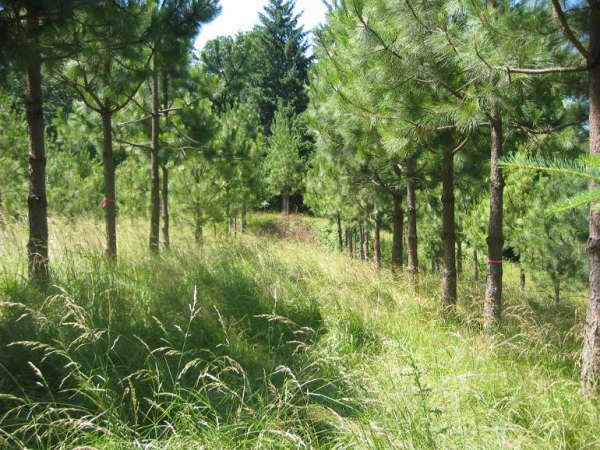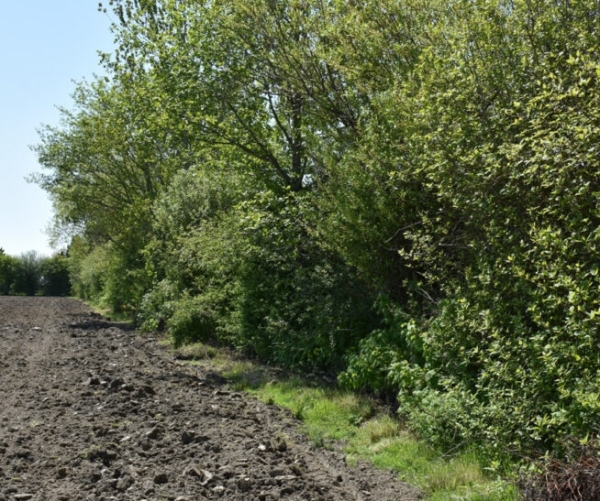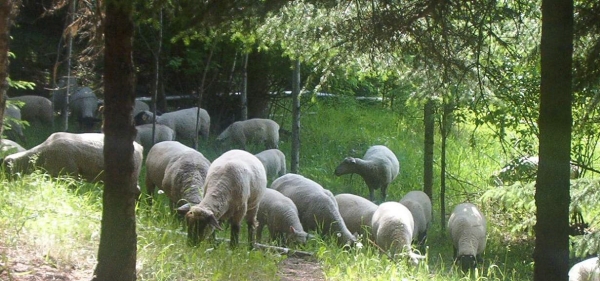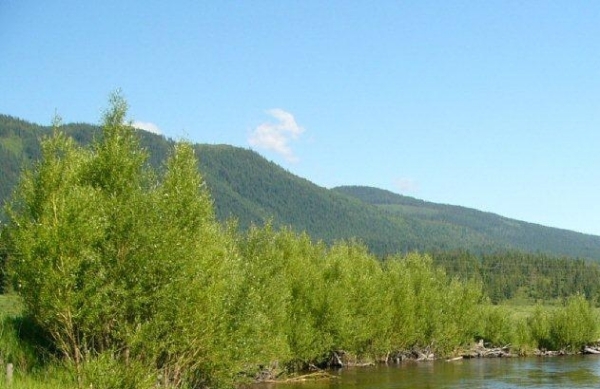Agroforestry - Integrated Benefits of Trees and Shrubs on Farms
by George Powell
The following is a summary of my presentation to the Select Standing Committee on Agriculture, Fish and Food of the Legislative Assembly of British Columbia. My appearance before the Committee and this presentation were part of the Committee’s Consultation on Agricultural Soil and Carbon Sequestration.
An Introduction to Agroforestry

It’s an honour to speak to the Committee today about agroforestry, a group of farm practices with tremendous potential to help protect the soil, build soil carbon, and contribute positively to enhancing agricultural production in British Columbia.
I will start today by introducing and defining agroforestry and then highlight some of the prominent agroforestry practices already in use in BC, specifically shelterbelts, silvopastures and farm riparian buffers. I’ll conclude with some priority actions for supporting agroforestry development and adoption in the province.
Agroforestry is a group of agricultural practices, all of which have in common the intentional, integrated use of trees or shrubs with other crop or livestock production. Agroforestry systems leverage the positive benefits of integration to enhance production, achieve conservation goals, or to buffer and transition land use at the farm or landscape level.
There is considerable misunderstanding about agroforestry in BC. For clarity therefore, let me emphasize that agroforestry is NOT:
-
Forestry. It is not woodlots on farms. It does not overlap with forest practices, and this distinction is now laid out in the regulations of the Professional Governance Act.
-
Agroforestry is also not the afforestation of farmland into closed forests, for carbon credits or otherwise. Agroforestry strategically uses low-density tree and shrub plantings to achieve specific goals. And, indeed it is an unrestricted, permitted farm use within the Agricultural Land Reserve.
-
Agroforestry is also not synonymous with non-timber forest products (NTFPs). Some mistakenly equate harvesting mushrooms or floral greenery from forests with agroforestry. NTFPs are a potential output from some agroforestry settings, but they are not one in the same.
Agroforestry’s Strength for BC Agriculture
The focus of the Committee’s consultations is on agricultural soil and carbon sequestration, and agroforestry can, and already is, contributing positively to this. Recent research from the University of Alberta highlights that agroforestry zones can store 46 tonnes per hectare more carbon in above-ground biomass and 36 tonnes per hectare more carbon in the soil than adjacent cropland (An et al. 2022. GCB Bioenergy 14(6):669-680).
The real strength of agroforestry however, is as climate change and extreme weather adaptation tool, that generates many co-benefits, including carbon sequestration.
Shelterbelts and Hedgerows

I’ll now highlight some agroforestry practices to demonstrate their potential, starting with shelterbelts and hedgerows.
We have long history of sheltebelt use in Canada, and there are very well documented benefits of using tree and shrub plantings around and across fields for reducing wind erosion and conserving soil moisture to the benefit crop and livestock production.
And they do so, while adding carbon storage to farmland.
Linear plantings of trees and shrubs along fencelines and road edges also present a large opportunity to sequester carbon above and below ground, with no interference to crop production, and indeed many situations where they can enhance yields.
The most recent Census of Agriculture found 38 percent of farms in BC already use shelterbelts or hedgerows, and their use has grown signifcantly in the last decade, though it still lags the national average.
Silvopasture

The second agroforestry practice I’ll highlight is silvopasture: the integration of trees or shrubs with forage production and livestock.
A recent analysis of silvopastures across temperate areas of the world (Pent, 2020. Agroforest Syst 94: 1741–1758.), concluded that it can improve total productivity per area by up to 55 percent compared separating pasture and tree production.
Additionally, globally, silvopastures are estimated to sink an average of 2.7 tonnes of carbon per hectare, per year (Project Drawdown). For this reason Project Drawdown, a leading thinktank on climate action, has ranked silvopasture as one of the top fifteen climate mitigation tools on the planet and it is the highest ranked of all of Project Drawdown’s agricultural solutions in terms of mitigation impact.
Production gains on silvopastures, including increased weight gains, milk production and reproductive success, also stem from improved animal welfare (Fike et al, 2004. Forage and Grazinglands 2(1):1-12.). Silvopastures reduce air temperatures and wind speed in their shelter, translating to lower body temperatures and lower water demand.
Happier, healthier animals produce more.
Silvopastures, as a landscape buffer, offer an option to reduce interface wildfire risks in BC. Thinning and pruning ingrown forests coupled with targeted grazing is a type of silvopasture. Anecdotal evidence from BC and Washington State supports the effectiveness of silvopastures in slowing or stopping wildfire movement.
A real strength of using silvopastures for fuel management is that it is an option that generates ongoing revenues and economic activity by creating incremental forage production to strengthen livestock sectors. Rejuvination of ingrown community pastures across the BC interior into silvopastures is one such option.
Like many agroforestry systems, this is conservation that pays.
Farmland Riparian Buffers

The final agroforestry practice I’ll highlight is farmland riparian buffers. Riparian zones are very productive landscape units where water meets the uplands, and they have incredible potential to sequester carbon.
For example, work from central Canada found treed riparian buffers can store up to 768 tonnes of carbon per hectare (Ofusu et al. 2022. The Forestry Chronicle 98(1):103-118.).
And returning tree and shrub cover to farmland riparian zones comes with many well documented co-benefits including; reduced soil erosion, improved fisheries values, enhanced biodiversity, reduced farm runoff and increased water storage.
Healthy riparian zones with deep rooted trees and shrubs, have increased capacity to capture and store water. This acts to slow down the movement of water off-farm and dampen precipitation-driven flood events. This can provide benefits to the farm, where they are experiencing lower water tables due to drought, and also at a watershed level, where upstream banking of water can prevent catastrophic downstream flooding.
Priority Development Actions
Expanding agroforestry as viable management tool for BC agriculture requires support for the development and adoption of these practices.
Firstly, we need to continue to improve awareness and education materials to aid producers in understanding the potential of agroforestry in their individual production settings.
Secondly, we need to collect data and analyze basic relationships from existing practices around British Columbia in order to make better data-driven beneficial management practices recommendations and give producers recognition for existing carbon-sinks, often not tabulated in climate modelling.
The greatest strength and challenge to supporting BC agriculture is its diversity. We have hundreds of different production categories carried out in an incredibly diverse array of soils, climate and topography. All of which equates to thousands of unique production settings. We need to sample across this diversity and pull out the most important factors determining success towards production and conservation goals.
Subscribe via RSS
